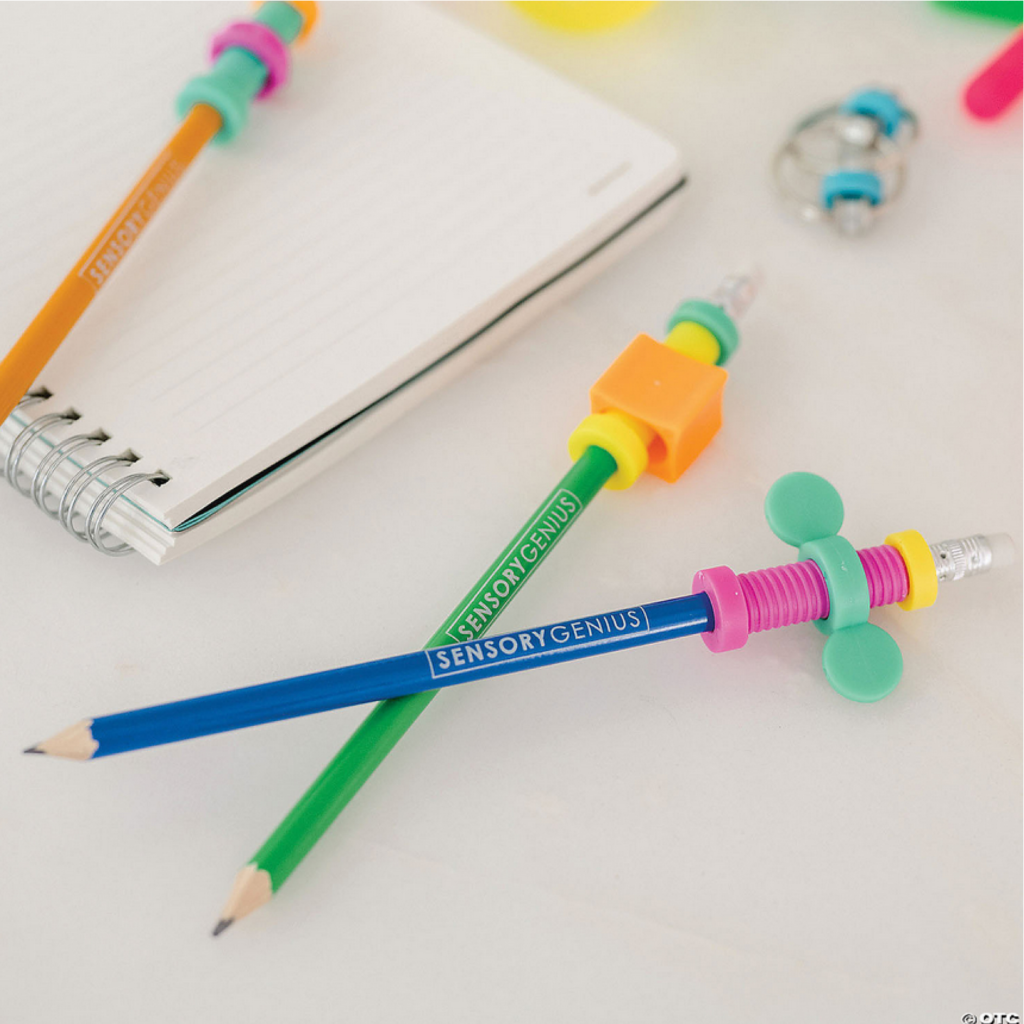ADHD Awareness Month: Facts and Fictions

Happy ADHD Awareness Month! Here’s a quick overview of the most up-to-date consensus about ADHD, some common misconceptions, and suggested interventions for children diagnosed with the disorder.
ADHD has been a hot topic for several years now and has sometimes been a controversial diagnosis. Some folks say that high energy is just a common attribute of children. But, when accompanied by severe distractedness and compulsive behavior, it may be an indicator of attention-deficit/hyperactivity disorder.
Six million children have been diagnosed with ADHD between 2016 and 2019. This number is continuing to rise. While there is some debate over whether rates of ADHD are increasing or doctors are just getting better at identifying it in children, the fact remains that many children – almost 10 percent! — struggle with behaviors associated with ADHD. So, being aware of the disorder and its interventions is important for caretakers and teachers of young children.

In our first article for ADHD Awareness Month, we wanted to explore some of the facts and fictions around ADHD.
But first, what is ADHD?
ADHD is a common neurodevelopmental disorder that affects individuals beyond the age that most children grow out of certain behaviors. Symptoms include inattention, hyperactivity, and impulsivity.
These may manifest as behaviors such as an inability to wait one’s turn, interruptive talk patterns, or difficulty staying on task. Children with ADHD often appear not to listen and may easily forget appointments or instructions. When unaddressed, these attributes can impact an individual’s ability to stay organized and succeed in many areas of their life.
On the other hand, some traits associated with ADHD are actually powerful attributes when appropriately honed. For instance, while ADHD is thought of as an inability to focus, many children with ADHD can tap into a state of hyperfocus. Tasks that they enjoy may engross them for several hours.

Kids with ADHD are often very creative and think outside the box. They are highly social and great communicators. Their drive for stimulation makes them spontaneous and confident. They also display high resiliency as they navigate living with their disorder with self-awareness and systems. Many famous scientists and thinkers are now thought to have had ADHD.
Common misconceptions about ADHD
Despite its prevalence, there are still a lot of misconceptions about ADHD. So, what ADHD rumors just aren’t true?
Here are 6 common misconceptions about ADHD and their corrections:
- ADHD only affects children.
While ADHD is often first identified in children, long-term studies of ADHD show that it is a lifelong disorder. ADHD persists from childhood into adulthood in 35% – 65% of known cases. However, individuals who are diagnosed as children are often able to develop regulatory routines. These systems help mitigate the disorder’s effects and empower them to thrive in all areas of their lives.
- All ADHD looks the same.
Some people think that if a child isn’t bouncing off the walls, they can’t possibly have ADHD. However, many clinicians currently recognize three types of ADHD: inattentive, hyperactive/impulse, and combined.
Inattentive refers to children who struggle with staying on task, focusing, and organization. Hyperactive/Impulse refers to children who constantly need to move and constantly take action without thinking through consequences. Combined applies to children who display both kinds of criteria.
In addition to these different types, ADHD may manifest differently depending on a child’s culture, upbringing, or resources. A child displaying symptoms of ADHD shouldn’t be written off as difficult – they should be considered candidates for additional help.

- ADHD is caused by poor parenting.
When we see children struggling with self-control or focus, it’s tempting to point the finger at the caregivers. However, research shows this to be a totally incorrect response! Studies looking at twins with ADHD point to genetic and neurological factors as the main causes of ADHD. Researchers consider social and environmental factors to have secondary importance.
That said, uninvolved parenting or inconsistent disciplinary practices can worsen the effects of ADHD. Parents who discover that their child has ADHD can learn adaptive parenting approaches that help their child manage their disorder.
- ADHD isn’t real. Hyperactive/inattentive kids just need to be taught more discipline.
The other place where blame gets laid is on the children themselves. Some caregivers or teachers may interpret a child’s difficulty with focus or self-control as disobedience or attention seeking.
However, decades of clinical research show that some children struggle with heightened inattentiveness or impulse control despite wanting to do better. Additional research has found ADHD to be genetically disposed (at least in part) and has identified differences in brain development between children with and without the disorder. This demonstrates that not only is ADHD real, it has biological grounding.

- Girls have lower rates or less severe symptoms of ADHD than boys.
ADHD has traditionally been seen as a boy’s disorder. However, ADHD in girls and women has gained more recognition in recent decades. Girls with ADHD are now thought to have similar rates and behavioral trends as boys, with societal pressures contributing to the biggest differences between these groups.
- ADHD is a learning disability.
This last one is super important. While ADHD can sometimes get in the way of a child’s ability to learn, it doesn’t reflect a child’s ability to comprehend or execute high-level cognitive functioning. So, doctors do not consider ADHD to be a learning disability. In fact, plenty of kids with ADHD perform exceptionally well in school when they are given the proper support.

Recommended interventions for children with ADHD
As always stated on this blog, if you think your child is showing signs of ADHD, your best next step is to get a professional opinion. Child psychologists apply behavioral therapies or talk therapies to help children develop tools to modify or control their behaviors. If medication is deemed necessary, a child psychiatrist can prescribe pharmaceutical interventions.
But, you can also help your child at home before or alongside professional treatment. The foremost suggested intervention for children with ADHD is to help them develop systems for managing their disorder.

Children with ADHD benefit from regular schedules posted somewhere visible. Checklists can help a child stay on track when they’re trying to get out the door in the morning or take care of afterschool tasks. They also benefit from having an organized space. So, if you are able, help your child designate locations for their clothing, bookbag, toys, and other everyday items.
Secondly, if your child is of the hyperactive type, provide them plenty of opportunities to let loose all their excess energy. Have reasonable expectations for them – don’t set them up to fail by putting them in situations where they need to sit still for longer than 15 minutes. Space out the instances where they need to be static, and be sensitive to when they reach their limit.
